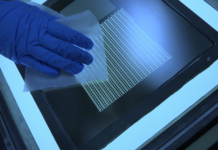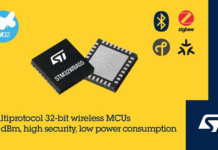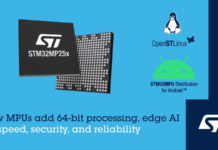Semicon India conference highlights 2022
PM Modi inaugurated India’s first global semiconductor conference, Semicon India 2022 in Bengaluru, Karnataka. The three-day (29th April to 1st May) conference was organized by India Semiconductor Mission (ISM) with industry associations. The event attracted several domestic companies, start-ups, global tech giants, diplomats, Investors; Academics, Electronics and Semiconductor industry associations and veterans.
In his inaugural speech, PM discussed 6 key points on, why semiconductor investors should invest in India? Below are the excerpts:
- India has transformed every sector with the digital revolution. Indians are the largest consumers of data per capita and UPI, being the world’s most efficient payment infrastructure, can be seen in the day-to-day life of Indians.
- Apart from investing in 5G, IoT, and clean energy technologies, we are moving towards innovation in data, AI and other technologies.
- India is moving towards a strong economy. Indian Semiconductors consumption is expected to cross 80 billion Dollars by 2026 and 110 Billion Dollars by 2030. We are adding new unicorns every week and witnessing the fastest-growing Startup Ecosystem.
- India offers ease of doing business with one of the most favourable taxation structures in the world along with new policies and schemes.
- India is a hub for semiconductor design engineers, with the top 25 semiconductor design companies having their design or R&D centres. We are providing the best skilling and training system to young Indians to fulfil the needs of 21st-century technology.
- We have made several steps to transform the Indian manufacturing sector.
1st Day Highlights
Applied Material to invest Rs 340 Cr in India
Applied Material is a leading semiconductor and display equipment supplier in the world. Addressing the SEMICON 2022 virtually from the US, Dr Prabhu Raja the senior VP, Semiconductor Products Group, Applied Materials, announced their next phase of expansion in India of Rs 340 Cr to scale the company’s infrastructure. Sharing the company’s plans, he said, “in coming` 5 years company expect to invest Rs 1500 Cr in product development and validation centre which will include a dedicated campus additional talent and development labs”.
To turn the dream into reality, the government introduced the below collaborations.
MOU signed between SEMI and ELCINA to promote semiconductor ecosystem in India
SEMI is a global association, headquartered in Milpitas, California, USA, and comprises more than 2,500 member companies involved in the semiconductor, electronics design and manufacturing supply chain. It fosters innovations in materials, design, equipment, software, devices, and services for affordable electronics. While ELCINA is the premier trade body committed to the development of the Indian Semiconductor and the ESDM ecosystem. Under this MOU the two associations will identify potential opportunities in the upcoming semiconductor and microelectronics sector, and work to realise the potential.
MOU between CDAC and Qualcomm to support semiconductor design startups, in line with the objectives of the PLI scheme
Qualcomm India in a collaboration with the C-DAC, an autonomous scientific society of the Ministry of Electronics and Information Technology will provide and facilitate mentorship, technical training, and industry outreach.
MOU between AICTE and SEMI and ISM and VLSI society for training and skilling the tech workforce for the semiconductor sector
Under this, the All India Council for Technical Education (AICTE), SEMI andIndia Semiconductor Mission the collaboration will focus on things necessary to nurture future semiconductor professionals. Like, such as creating futuristic curriculum and training faculty members in designing and skill-related courses. AICTE has already startedundergraduate and diploma level courses to support the semiconductor industry. These courses are going to be enrolledthis year. These will specialise inVLSI design and fabrication.
2nd Day highlights
The second day witnessed the design and co-development agreements.
On 27th April 2022, the government of India announced the Digital India RISC-V (DIR-V) program which aims to achieve industry-grade commercial silicon and design for the next generation of microprocessors
DIR-V has announced five MoUs for the use of indigenously developed RISC-V Processors -SHAKTI developed by IIT Madras and VEGA by C-DAC.
- SONY India and DIR-V SHAKTI Processor (IIT Madras) join hands for the Systems/Products developed by SONY.
- ISRO Inertial Systems Unit (IISU), Thiruvananthapuram and DIR-V SHAKTI Processor (IIT Madras) to develop high-performance SoCs (System on Chip) and Fault-Tolerant Computer Systems.
- MOU between Indira Gandhi Centre for Atomic Research (IGCAR), Department of Atomic Energy and DIR-V SHAKTI Processor (IIT Madras) for the Systems/Products developed by IGCAR.
- Bharat Electronics Limited (BEL) and DIR-V VEGA Processor (C-DAC) to work together on Rudra Server board, Cyber security, and Language Solutions.
- MoU between the Centre for Development of Telematics (C-DOT) and DIR-V VEGA Processor (C-DAC) for the 4G/5G, Broadband, IoT/ M2M solutions along with the above, another MOU was announced between IISc Bangalore and SEMI, the USA for building core competence of quantum technologies – multi-qubit superconducting quantum processors, photonic processors, diamond-based magnetometers, lab-level quantum-secured communication network etc.
3rd Day Highlights
The concluding day of SEMICON 2022 started with the remarks of Mr Rajeev Chandrasekhar, addressing the veterans he said “In the past, the world heard Intel Inside, in the future, the world should hear Digital India Inside”.
Following multiple MoUs were announced in the backdrop of Semicon India 2022:
- To support “5G Narrowband-IoT– the Koala Chip, Architected and Designed in India” Cyient, WiSig Networks and IIT Hyderabad signed an MOU. Cyient is a global digital engineering and technology company that possesses expertise in design, building, operating, and maintaining the products and services while WiSig Networks, a 5G start-up incubated at IIT Hyderabad develops 5G Mobile Communications Products and Solutions. Under this agreement, Koala SoC, an NB-IoT 3GPP standards-compliant chipset will get into mass production including the development of a package, test solution suited for volume production, silicon fabrication, and volume testing of the IC, and supply management of the chip. This chip finds applications in Smart Meters, Asset tracking, Digital Healthcare and many more.
- MoU between Signal chip Innovations, MeitY and Centre for Development of Advanced Computing (C-DAC) for not only design and manufacture but also deployment and maintenance of 10 Lakh Integrated NavIC (Navigation with Indian Constellation) and GPS Receivers. Signalchip, an Indian Fabless semiconductor company has developed the “Agumbe” series of baseband, modem and radio frequency (RF) chipsets for 5G/4G networks with integrated support for global navigation satellite systems including NavIC.
- The partnership between EDA companies (Synopsys, Cadence Design Systems, Siemens EDA and Silvaco and CDAC benefits the Meity Chips to Startup (C2S) Programme, which will enable students and researchers to access EDA Tools & design solutions from the companies.
- The MoU signed between Semiconductor Research Corporation (SRC) in the USA, a world-renowned, high technology-based consortium, and IIT Bombay is focused on bringing together SRC’s industry experts and India’s R&D talent to create a compelling industry-driven world-class R&D program. Through this program, SRC will engage with Indian academia through a public-private partnership (PPP) model co-funded by MeitY.
- MoU between the Global Institute of Electrical and Electronics Engineers (IEEE India) and the Centre for Development of Advanced Computing (C-DAC) was announced for skill and technical standards development in semiconductor electronics focusing on VLSI design and Electromagnetic interference (EMI)/ Electromagnetic Compatibility (EMC).
- MeitY announced an MoU between Atal Community Innovation Center-Kalasalingam Innovation Foundation (ACIC-KIF) and the Centre for Development of Advanced Computing (C-DAC) for collaborative R&D, Product development and Training in the areas of semiconductor technologies, Power electronics, Energy harvesting, Electric vehicles etc.
Apart from milestone MOUs, MeitY announced, that Prof. Rao Tummala from Georgia Tech University, USA has consented to be a part of the Advisory Committee of India Semiconductor Mission.
The event was not only confined to MOUs and pacts. Several panel discussions, product overviews and company leaders’ vision and mission toward making India self-reliant in the semiconductor field, discussion on realising several technologies were part of it. The complete videos are available on the “Digital India” YouTube channel.

















